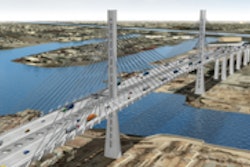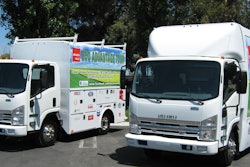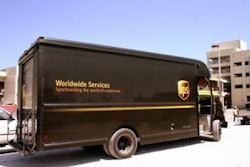
Harbor commissioners from Los Angeles and Long Beach came together for a special joint session on Monday, November 22, and unanimously approved an updated version of the San Pedro Bay Ports Clean Air Action Plan, which aims to reduce air pollution at the two seaports. Since being enacted in 2006, the original CAAP has initiated a wide range of air pollution-reducing measures for the ships, trains, trucks and other heavy machinery used to move freight through the port complex.
“Through successful collaboration and substantial investments by the ports and the industries we serve, air emissions related to port-facilitated goods movement have declined 33 percent to 56 percent since 2005,” says Cindy Miscikowski, president of the Los Angeles Board of Harbor Commissioners. “Today’s action builds on the CAAP’s success, with updated goals for further curbing port-related pollution in the decade ahead.”
The 2010 CAAP Update sets even more aggressive goals for reducing air pollution and health risks from port operations, including working with shipping lines on a “preferential deployment” system to always bring their newest ships – which emit less air pollution – to the San Pedro Bay port complex, and to determine what air quality technology retrofits can be made to engines on existing ships. Another measure sets goals and standards to prompt railroads to bring their newest and cleanest locomotives to local near-dock rail yards and to the ports.
“These two ports are making good on their pledge to improve air quality, even as we modernize and redevelop facilities to accommodate business and job growth,” says Nick Sramek, president of the Long Beach Board of Harbor Commissioners. “The reason we can do that is the CAAP. The CAAP Update now will take us to the next level, showing that we remain committed to finding the best ways to clean the air.”
The original CAAP and the 2010 CAAP Update were developed with significant input and collaboration among the ports, the U.S. Environmental Protection Agency, California Air Resources Board and South Coast Air Quality Management District.
“We are pleased to again recognize the environmental leadership of the Port of Los Angeles and the Port of Long Beach,” says Mary Nichols, CARB chairman. “Today, the Boards of Harbor Commissioners continued to embrace responsibility for the impacts of port air pollution by setting far-reaching baywide standards to protect the health of residents living in the surrounding neighborhoods, communities and transportation corridors. The 2010 Update builds on the success of the Clean Trucks Program to develop and deploy low-emission technology for the locomotives and ships that dominate the health risk. The ports’ actions over the next decade will help us implement regional plans to clean up California’s air, and their decision today fully supports ARB’s commitment to address air pollution in the state’s most highly impacted communities.”












